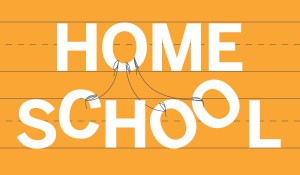Well, this week I explored Moodle for the first time. I felt like a pro through the first part of the process, installation.
And then things got hairy…
I started getting error messages like these every time I tried to log into my site:


It seemed that no matter how many open programs I closed, how many different avenues I took to get into my Moodle system admin role, or how many times I restarted my computer, these blasted errors were here to stay. In my frustration, trying to balance life, work, home, parenting, grocery shopping, and play dates, I skimmed and scanned the forums and missed my instructor’s advice to contact my domain host tech support.
I tried and tried again, and yet I continued to fail… Meanwhile, my colleagues were posting all these really neat screenshots of their explorations of Moodle, learning about all these features, and really starting to make things happen.
Still, my life online looked like this:
The horror was, well, horrible.
Finally, after spending most of the day watching my 23-year-old sister who has autism and trying unsuccessfully for hours and hours to get into my site, I decided to give it one last go this evening. What do you know? I was in!
I had been lucky enough to get a couple of hours on Moodle before the server errors kicked me out earlier in the week, so I quickly set to building and exploring. I scrolled through some of my colleagues’ posts, checked out their screenshots, and tried to absorb as much as I possibly could in record time.
It may not look like much to you, but my ability to insert these four features into my Moodle Sandbox demo course this evening gave me the most spectacular array of nerdy emotions. I ran the gamut.
Mostly, I was humbled. Over these past few weeks, I had been feeling PRETTY SMUG about my ability to quickly build, customize, and polish my new online presence. I felt like a genius when I figured out how to edit code to change the colors on my website. I felt like a pro when I learned how to embed images and videos into my posts, and even to edit their dimensions to suit my ideal layout.
~~~
This server error business is still a mystery to me. One thing is certain: I will never, ever, ever assume that a totally unfamiliar technology is going to work perfectly for me just because I want it to. Never again.
But here’s the thing. I can’t forget the overreaching theme and mission of this site, even in a tech rant like this. We are here to LEARN. The awesome thing about technology is that I already know that within just a few days or weeks, or maybe months at most, I’ll have this Moodle thing down pat. I’ll be building an online classroom where we can connect and share our knowledge, and it will not only function, it will function elegantly.
That’s the beauty of open source, user manuals, and a philosophy on life that goes something like this:
Try. Try again.
And just in case you, too, have suffered through your first encounter with a powerful new technology anytime recently, here are a few resources to whet your whistle and rebuild your faith that technology can indeed be harnessed for the common good.
The Mohnkern Learning Center — Powered by Moodle
Transitioning to PolyLearn (Moodle)


